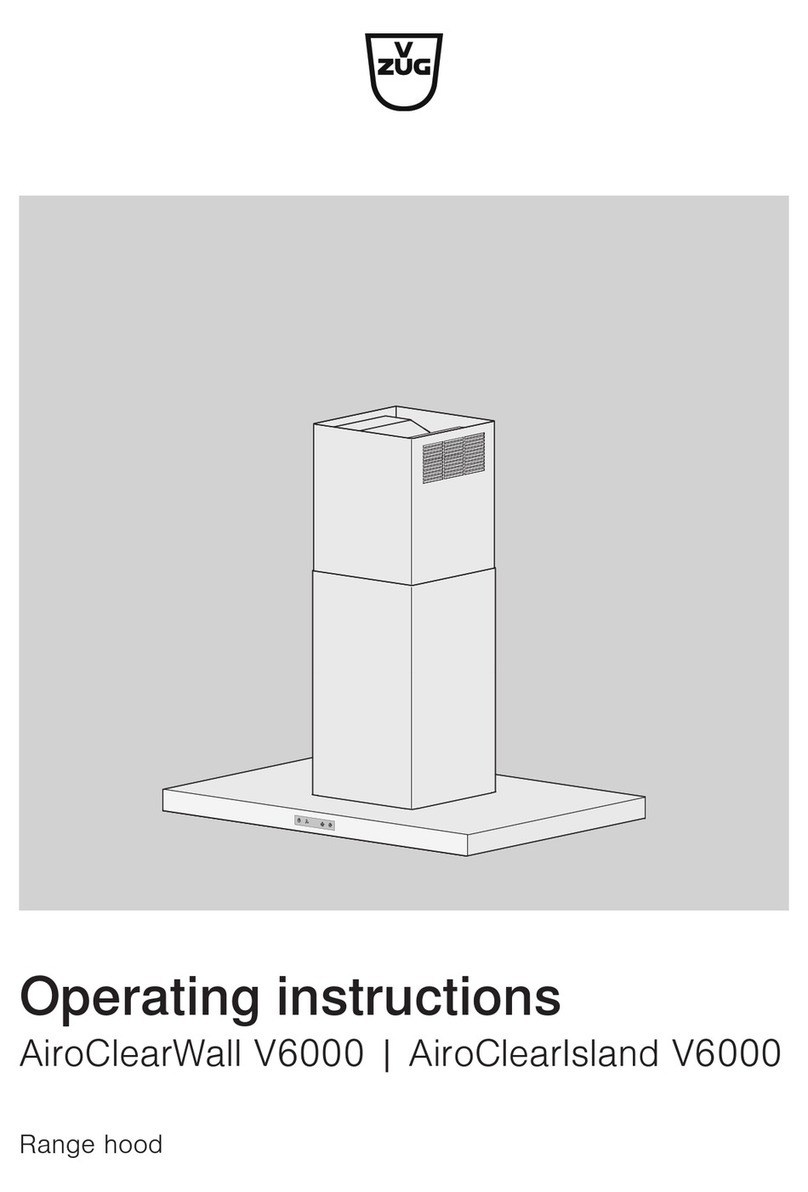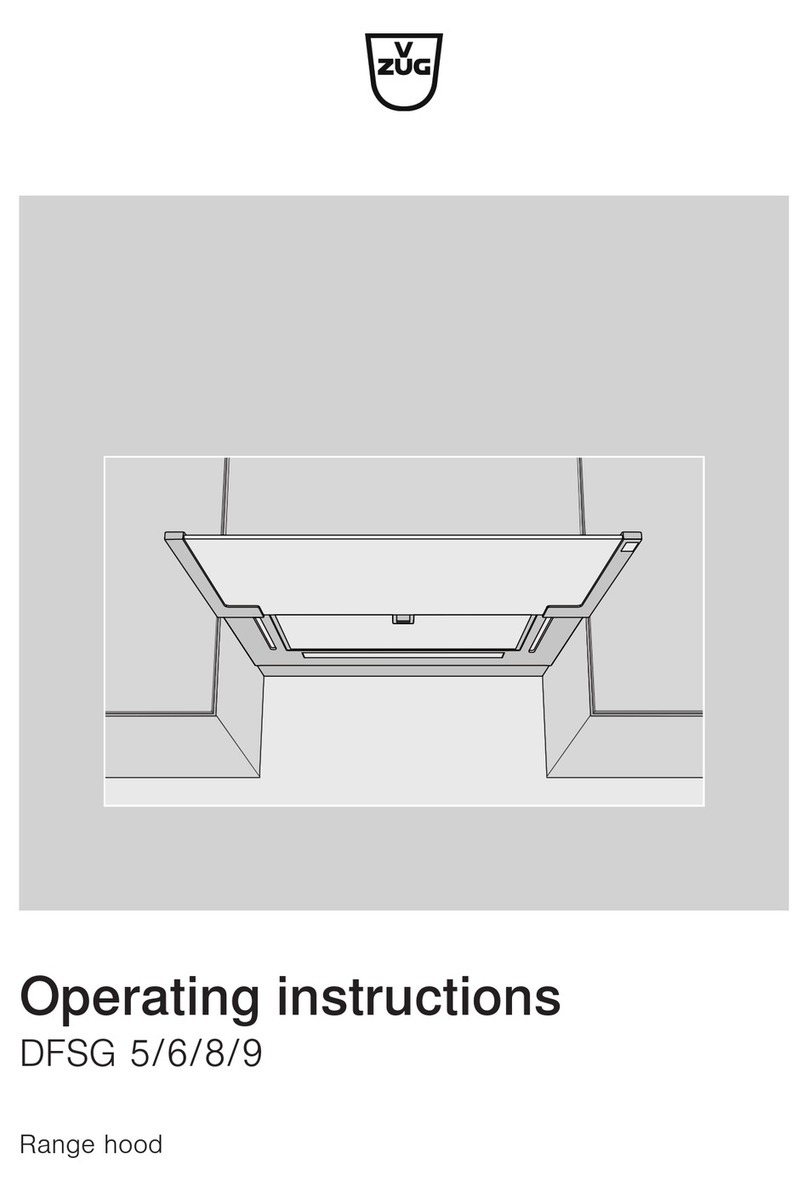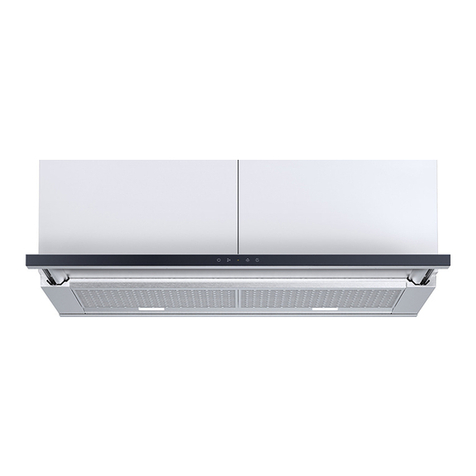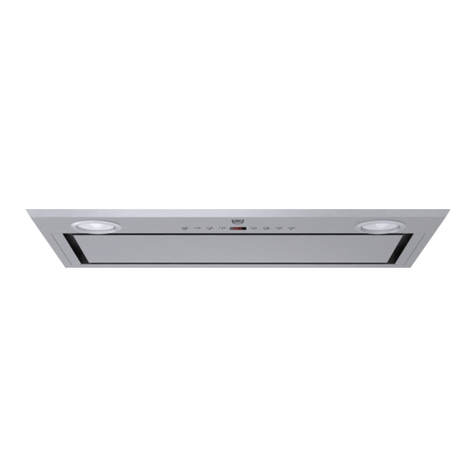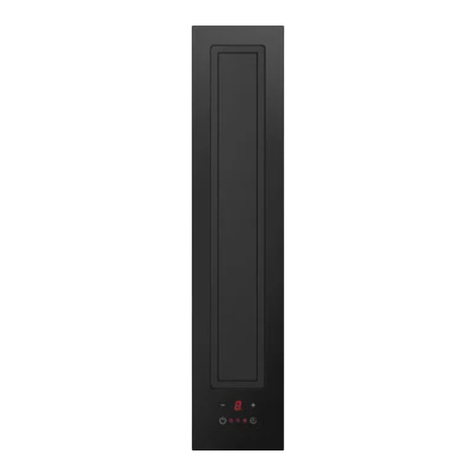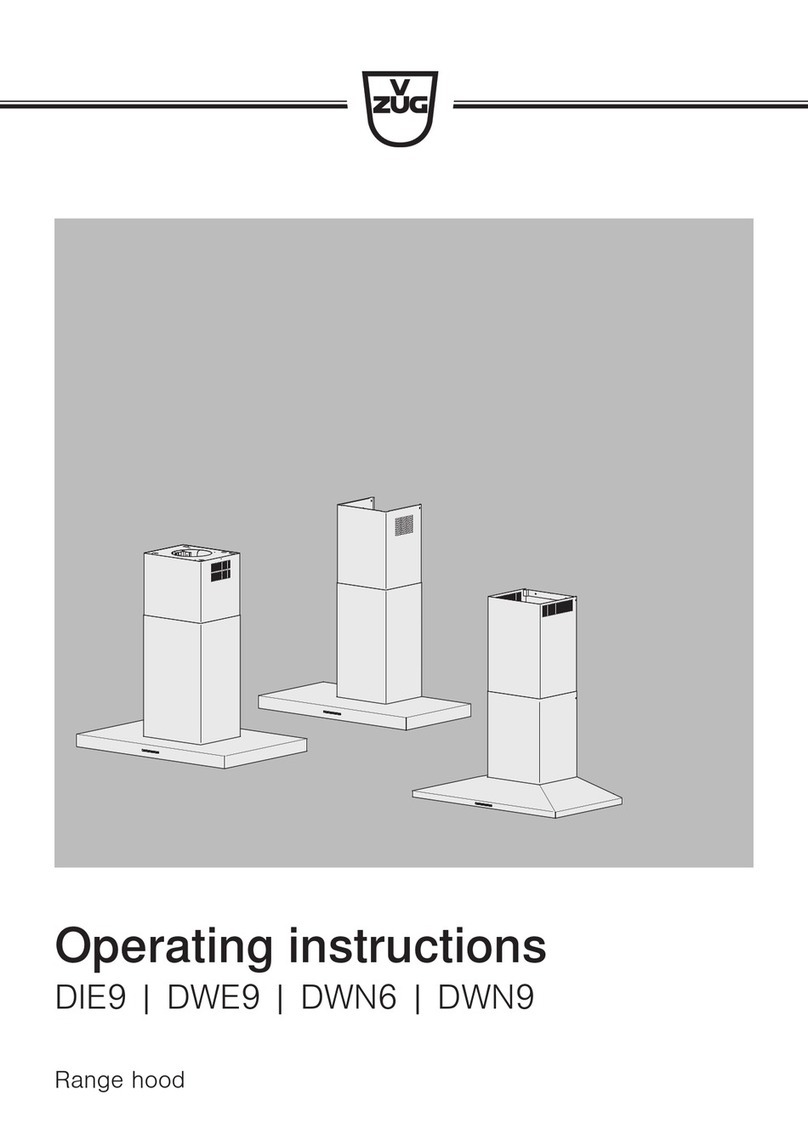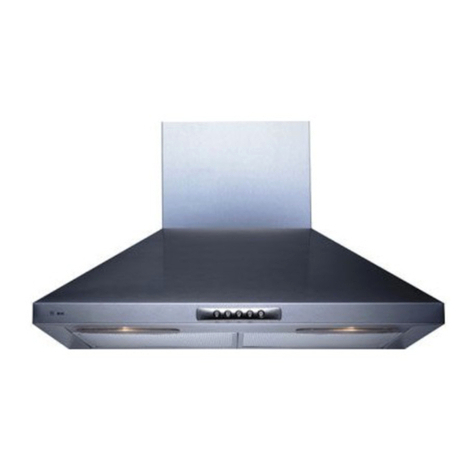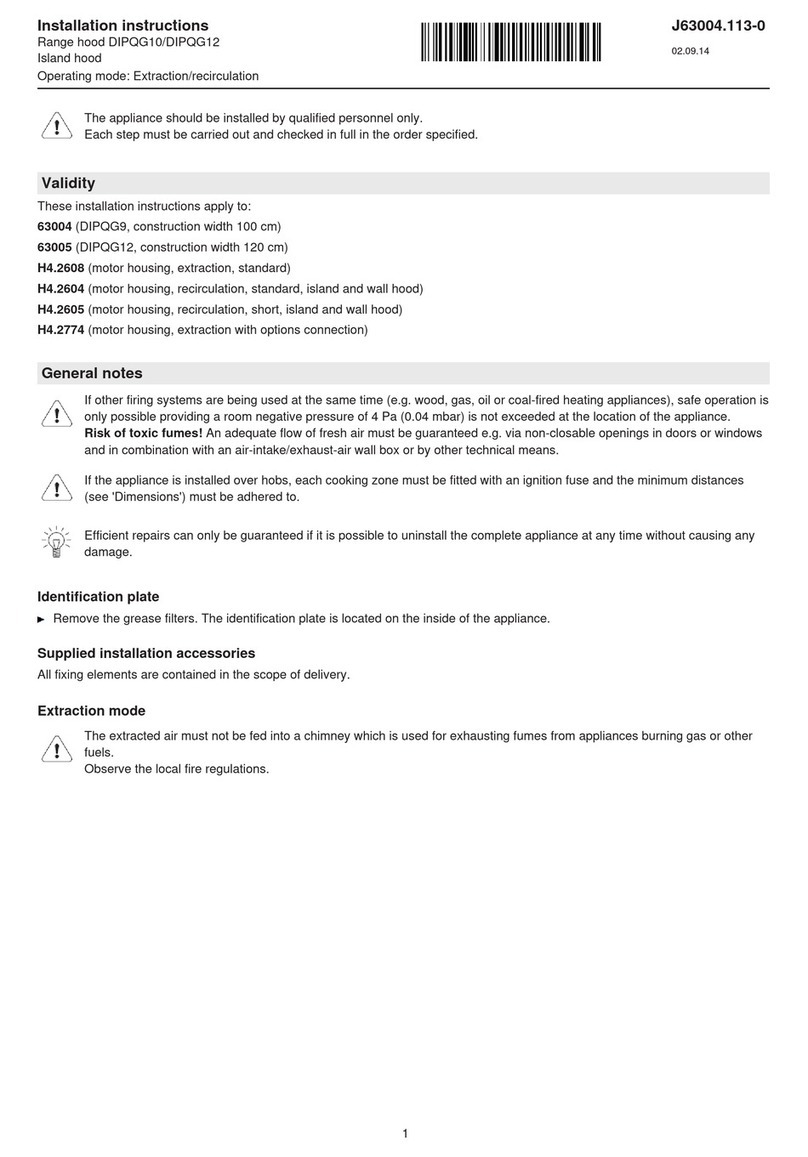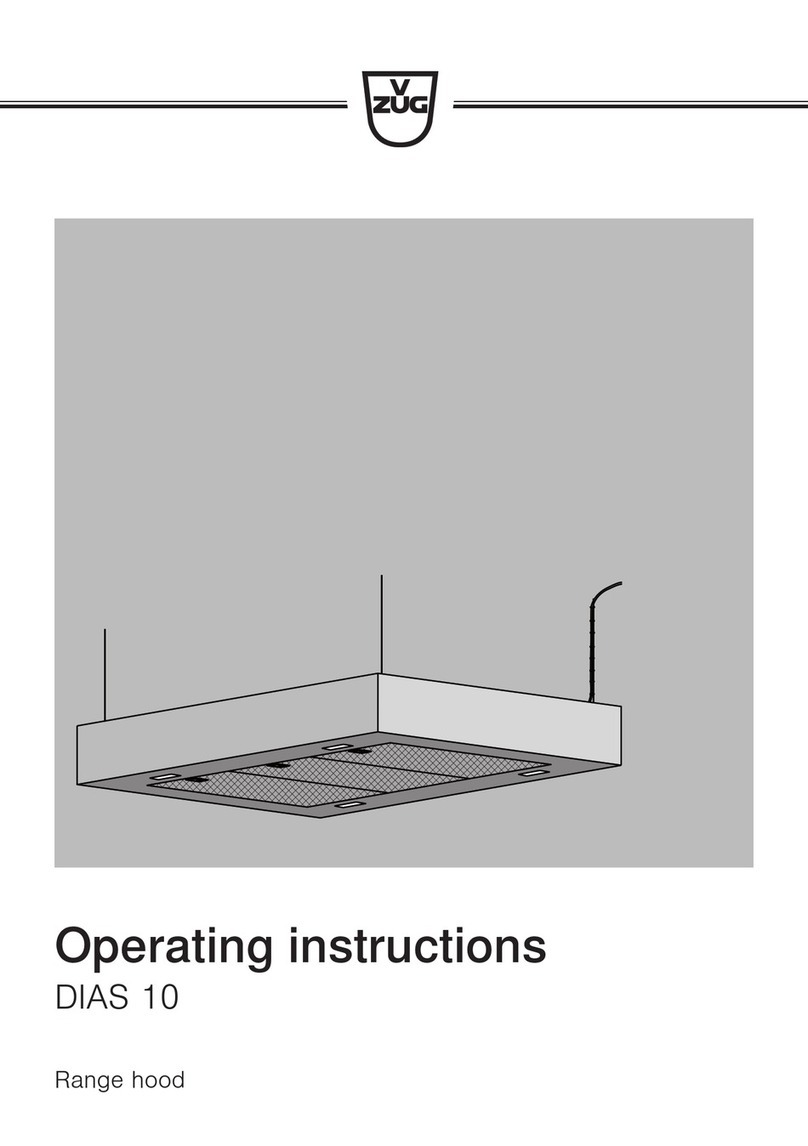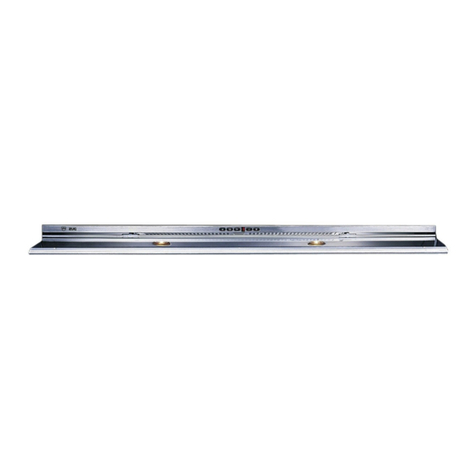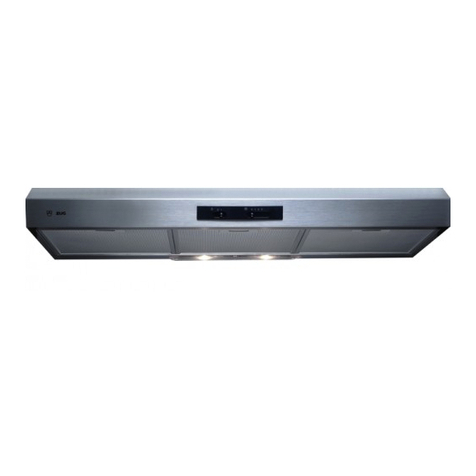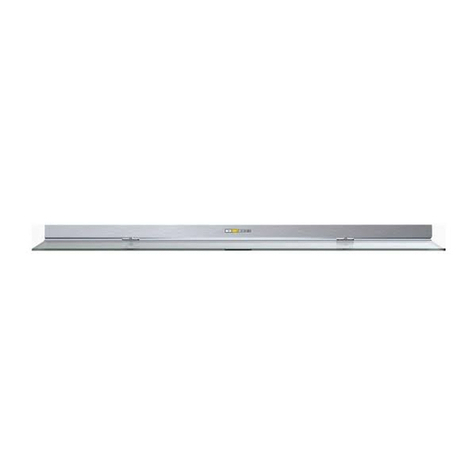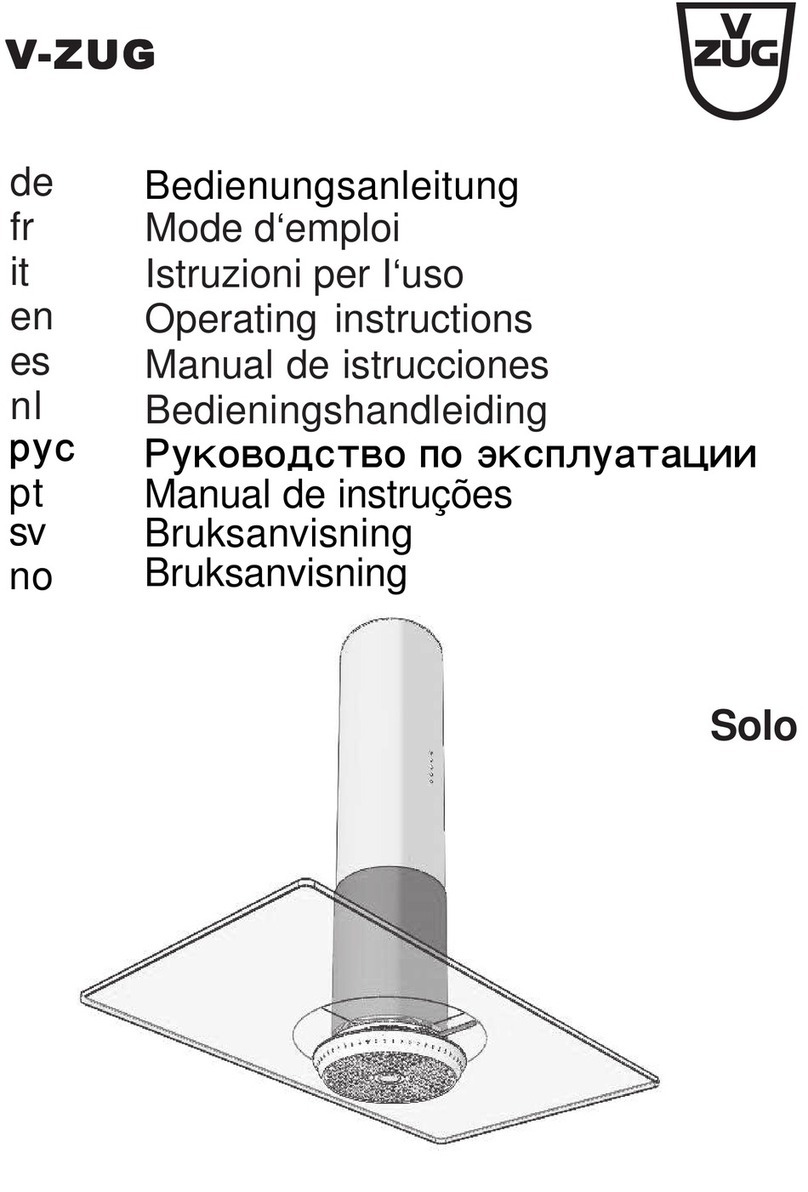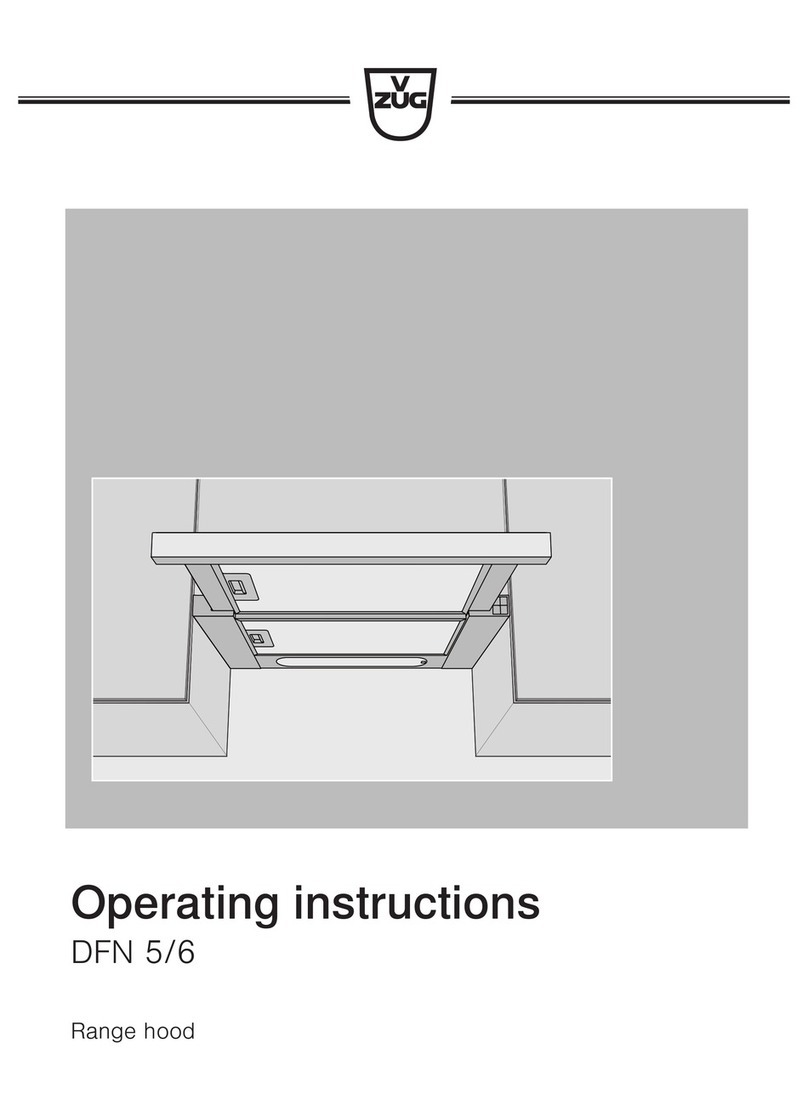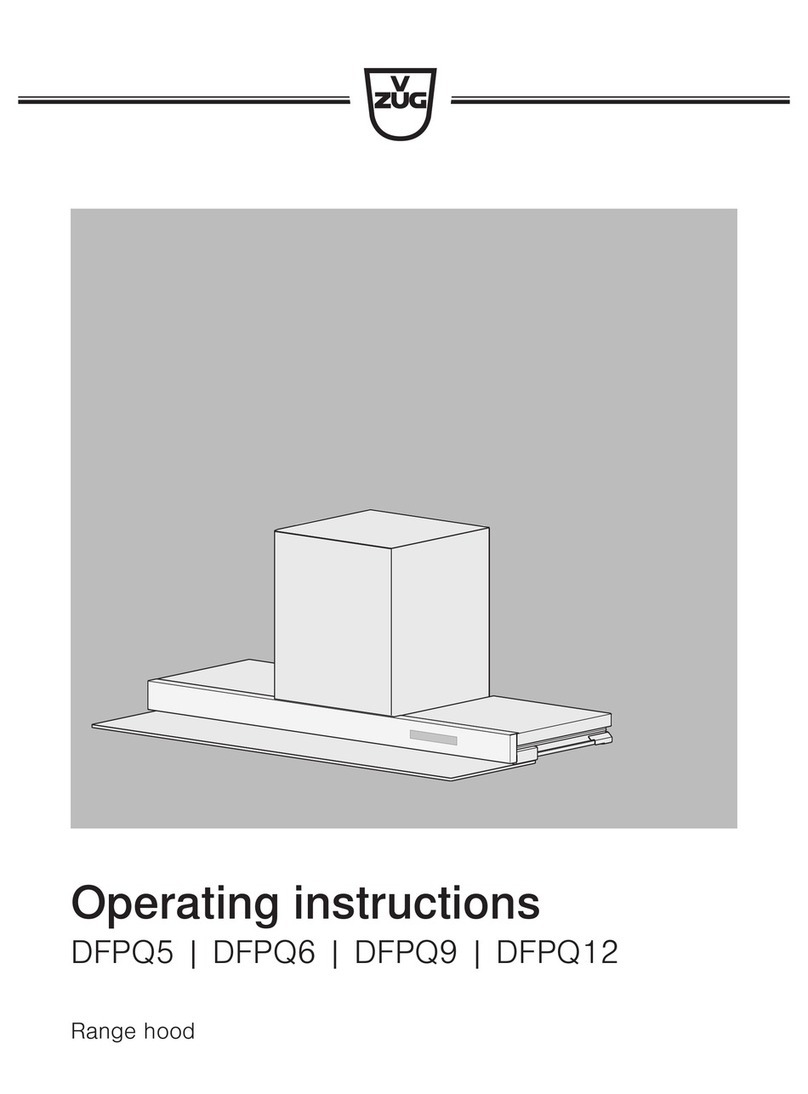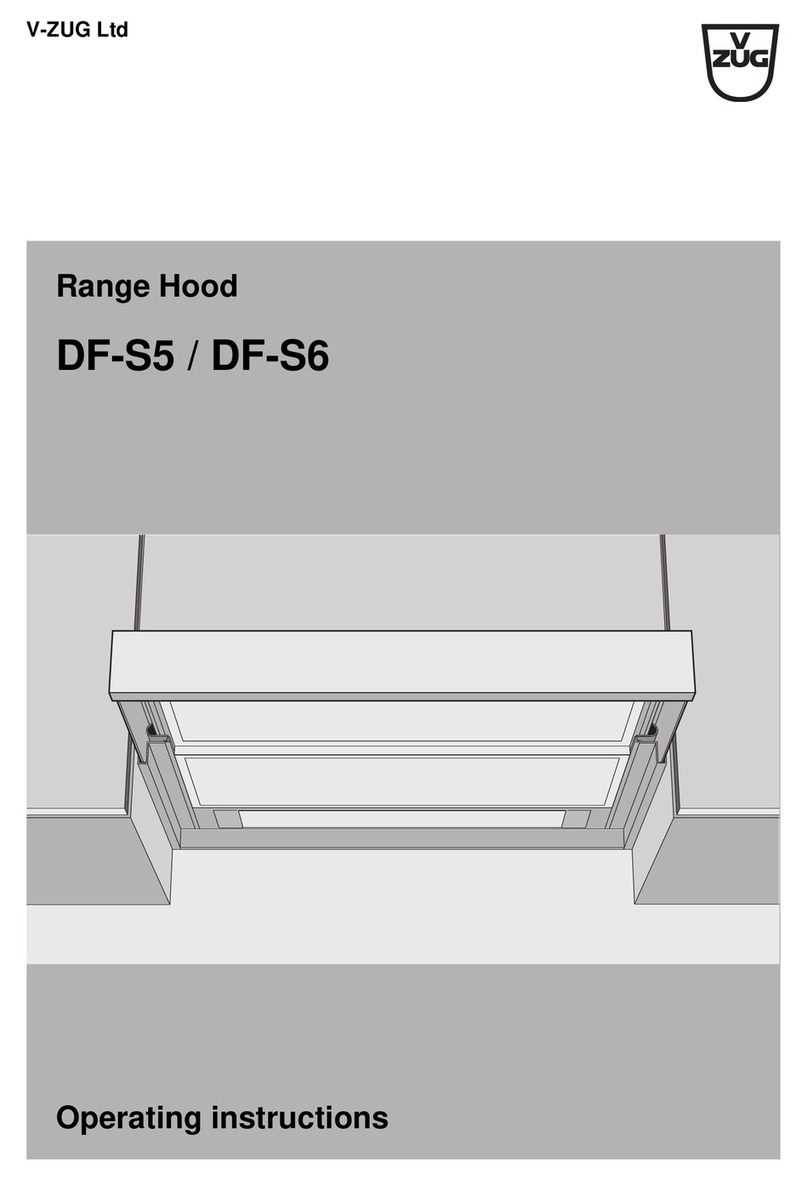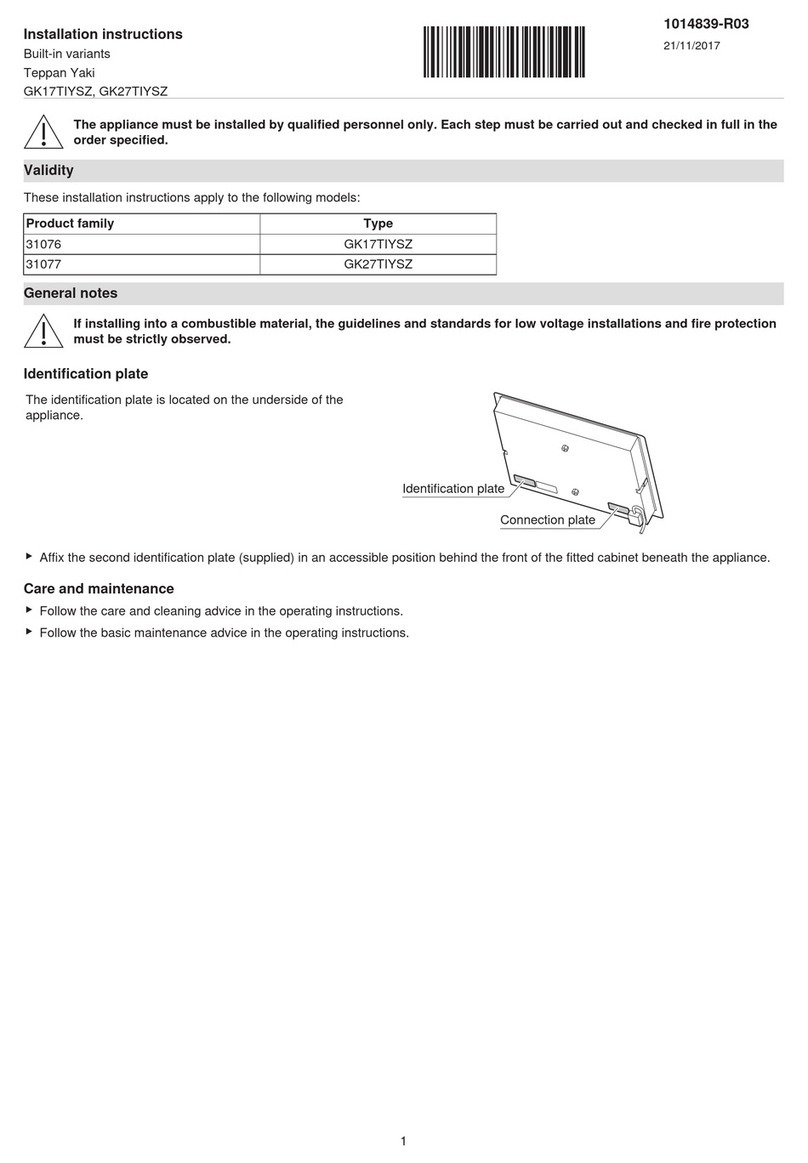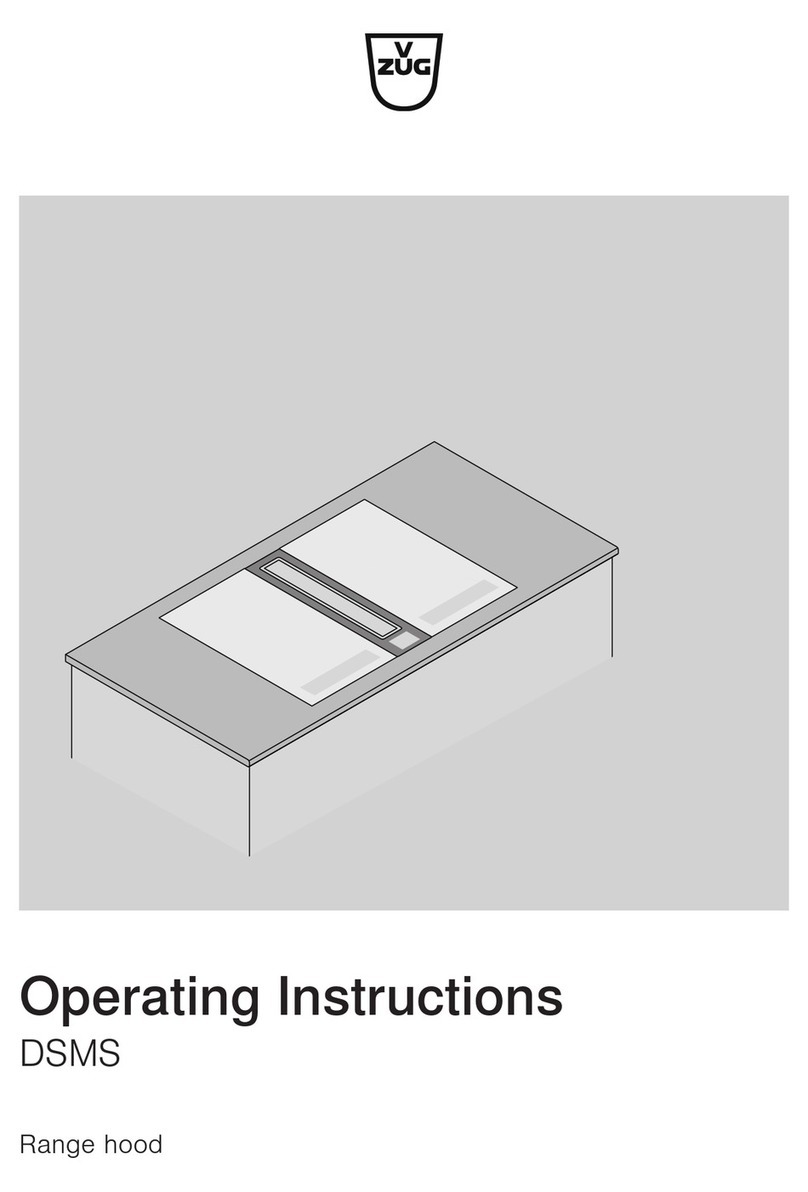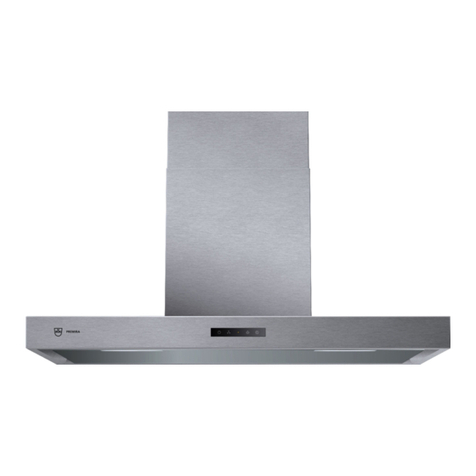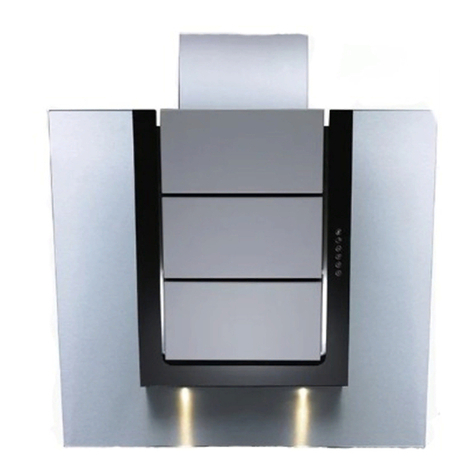
1 Safety precautions
5
1.2 Correct use
• The appliance is designed for use in the home for extracting cooking fumes
and smells from above the cooking surface.
• Any repairs, modifications or manipulations to the appliance, especially
any electrically live parts, should only be carried out by the manufacturer,
its Customer Services or similarly qualified persons. Repairs if carried out
incorrectly may cause serious injury, damage to the appliance and fittings,
as well as affect the functioning of the appliance. If the appliance is not
working properly or in case of a repair order, follow the instructions given
in the Repair service section. Please contact our Customer Services if
necessary.
• Use original spare parts only.
• Retain these operating instructions for future reference. If you sell or pass
the appliance on to a third party, please ensure these operating instruc-
tions, together with the installation instructions, accompany the appliance.
In this way, the new owner can inform themselves about how to use the
appliance correctly and read the pertinent safety precautions.
1.3 Children in the home
• Packaging material e.g. plastic and polystyrene can be dangerous for
children. Danger of suffocation! Please keep packaging material away from
children.
• The appliance is designed for use by adults who are familiar with these
operating instructions. Children are often unable to recognise the danger
of electrical appliances. Ensure proper supervision and do not allow
children to play with the appliance – there is a danger that children could
hurt themselves.

